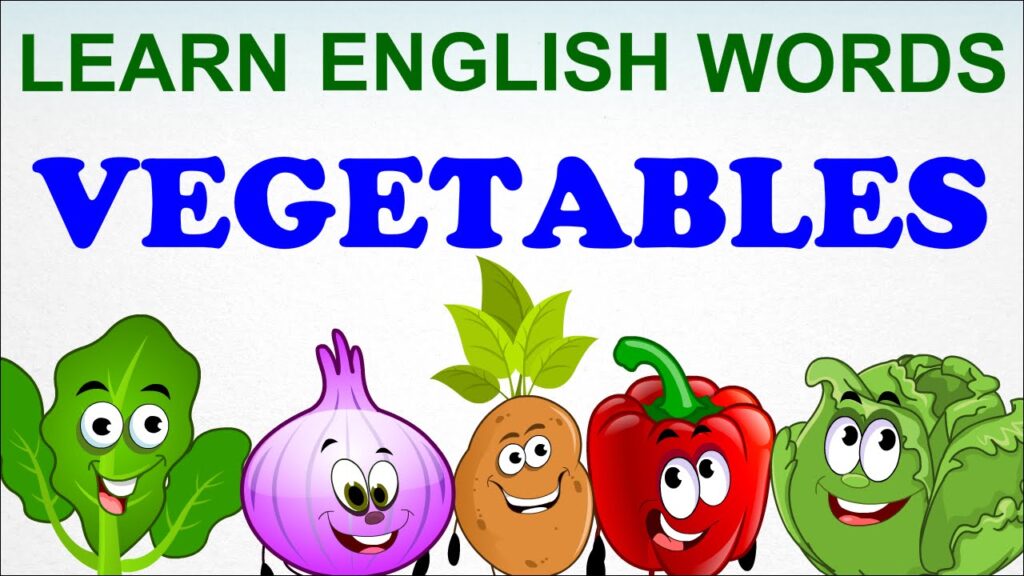How to Spell Vegetables: A Comprehensive Guide
Spelling can sometimes be a tricky endeavor, especially when it comes to seemingly simple words. One such word that often causes confusion is “vegetables.” In this article, we will explore the correct spelling of “vegetables,” provide insights into its meaning, usage, and significance in our daily lives, and offer tips to help you remember how to spell it correctly. Additionally, we will include a table with relevant information and an FAQ section to address common questions about the word.
The Correct Spelling of Vegetables
The correct spelling of the word is vegetables. This term refers to a wide range of edible plants or parts of plants, typically consumed as part of savory meals. The word is pronounced as /ˈvɛdʒɪtəblz/.
Common Misspellings
Many people often misspell “vegetables” as:
- Vegitables
- Vegatables
- Vegetablese
These misspellings usually stem from the pronunciation of the word, where the middle ‘e’ is often overlooked.
Understanding the Components of the Word
To better understand how to spell “vegetables,” let’s break it down:
- Vege-: This prefix relates to “vegetation” or “vegetarian,” which can help you remember the connection to plants.
- -tables: This suffix can be associated with the word “tables,” which can help you visualize the concept of serving vegetables on a table.
The Importance of Vegetables in Our Diet
Vegetables are an essential part of a balanced diet. They provide vital nutrients, vitamins, and minerals that contribute to overall health. Here are some key points regarding the importance of vegetables:
- Nutritional Value: Vegetables are rich in vitamins A, C, K, and various B vitamins, as well as minerals such as potassium and magnesium.
- Dietary Fiber: They are an excellent source of dietary fiber, which aids digestion and helps maintain a healthy weight.
- Low in Calories: Most vegetables are low in calories, making them an ideal food choice for weight management.
- Disease Prevention: Regular consumption of vegetables has been linked to a reduced risk of chronic diseases such as heart disease, diabetes, and certain cancers.
Table: Nutritional Benefits of Common Vegetables
| Vegetable | Key Nutrients | Health Benefits |
|---|---|---|
| Spinach | Vitamins A, C, K, iron | Supports eye health, boosts immunity |
| Broccoli | Vitamins C, K, fiber | Promotes heart health, aids digestion |
| Carrots | Beta-carotene, vitamins A, K | Improves vision, supports skin health |
| Bell Peppers | Vitamins A, C, fiber | Boosts immunity, promotes healthy skin |
| Tomatoes | Vitamins C, potassium | Supports heart health, may reduce cancer risk |
| Kale | Vitamins A, C, K, calcium | Anti-inflammatory, supports bone health |
Tips for Remembering How to Spell Vegetables
Here are some practical tips to help you remember how to spell “vegetables” correctly:
- Mnemonic Devices: Create a phrase or acronym using the letters in “vegetables.” For example, “Very Energetic Green Edibles Tasting Amazing, Bringing Life to Every Supper.”
- Visual Association: Visualize a table filled with colorful vegetables. The image of a table can help you remember the “tables” part of the word.
- Repetition: Write the word “vegetables” multiple times while pronouncing it aloud. This can reinforce the correct spelling in your memory.
- Link to Related Words: Connect “vegetables” with related words like “vegetarian” or “vegetation” to strengthen your understanding of its spelling.
- Practice with Flashcards: Create flashcards with the word “vegetables” on one side and its definition or a picture of vegetables on the other side. Regularly review these flashcards to reinforce your memory.
Vegetables in Daily Life
Vegetables are a staple in cuisines worldwide, known for their versatility in cooking and their nutritional value. They can be prepared in various ways, including:
- Raw: Many vegetables can be eaten raw, such as carrots, bell peppers, and cucumbers, making them perfect for salads and snacks.
- Cooked: Cooking methods like steaming, roasting, and sautéing can enhance the flavor and texture of vegetables.
- Soups and Stews: Vegetables are often used in soups and stews, providing depth of flavor and nutrition.
- Juices and Smoothies: Blending vegetables into juices or smoothies is a great way to incorporate them into your diet.
Frequently Asked Questions (FAQ)
1. How do you spell vegetables?
The correct spelling is vegetables.
2. What are common misspellings of vegetables?
Common misspellings include vegitables, vegatables, and vegetablese.
3. Why is it important to spell vegetables correctly?
Correct spelling is essential for effective communication, especially in writing about nutrition, cooking, and healthy eating.
4. Are all plant foods considered vegetables?
In culinary terms, vegetables usually refer to the savory parts of plants, distinguishing them from fruits and other sweet plant foods.
5. Can the word vegetables be shortened?
Informally, veggies is a common and acceptable abbreviation for vegetables.
6. How can I easily remember the spelling of vegetables?
Link “vegetables” with “vegetarian.” Both start with “vege-” which can help you remember the correct spelling.
7. Are vegetables important for a healthy diet?
Yes, vegetables are crucial for a balanced diet, providing essential nutrients, vitamins, and minerals.
8. How can I incorporate more vegetables into my diet?
You can add more vegetables by including them in salads, soups, smoothies, and as side dishes with meals.
9. What are some examples of vegetables?
Examples of vegetables include spinach, broccoli, carrots, bell peppers, and tomatoes.
10. Is there a difference between vegetables and fruits?
Yes, vegetables are typically savory plant parts, while fruits are the mature ovaries of flowering plants, usually sweet or tart.
Conclusion
Spelling “vegetables” correctly is a small but significant step in discussing nutrition, cooking, and healthy living. This simple word is packed with as much goodness as the food group it represents. By understanding its spelling and importance, you can enhance your vocabulary and knowledge about healthy eating.For more detailed information about vegetables and their benefits, you can visit the Wikipedia page on Vegetables.



